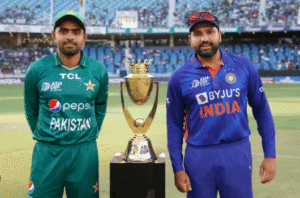South africa national cricket team vs new zealand national cricket team match scorecard
Setting the Stage: South Africa vs New Zealand
Match Overview
This match between South Africa and New Zealand was part of a thrilling bilateral series that had cricket fans eagerly awaiting every ball. It was not just another game but a clash between two cricketing giants who have often delivered unforgettable moments on the field. Whether it was the intensity of the 2015 World Cup quarter-final or the close encounters in previous ODI series, the rivalry between these two teams has always been fierce and exciting.
This particular match was held at the Wanderers Stadium in Johannesburg on March 10, 2023. The match was part of a highly anticipated series where both teams were vying for supremacy in the world of limited-overs cricket. South Africa, being the host nation, was hoping to capitalize on home conditions, while New Zealand, as always, was a strong contender with their well-rounded team and tactical approach.
The match was not just a chance for a victory but a stepping stone for both teams, with crucial points at stake in the context of the World Cup qualification standings. Each side was eyeing a strong performance to gain momentum ahead of bigger challenges. The stakes were high, and every run, every wicket, and every partnership counted in what was expected to be a closely contested battle.
Team Form Leading Into the Match
Both teams had their own storylines going into this encounter, with recent performances shaping the expectations surrounding the match.
South Africa, known for their powerhouse batting line-up and attacking fast bowlers, had been in decent form. Their recent series against India saw some impressive individual performances, but their inability to close out tight matches had raised concerns. The top-order, especially players like Quinton de Kock and Temba Bavuma, had shown flashes of brilliance but lacked consistency. On the bowling side, Kagiso Rabada and Anrich Nortje were expected to lead the attack, with their pace posing a major threat to any opposition. The team, however, needed to put it all together in a cohesive unit to overcome New Zealand’s disciplined approach.
New Zealand, on the other hand, had always been the team that played with precision and strategy. They had recently secured a series win against Bangladesh and were coming into the match with confidence. Kane Williamson, their ever-reliable captain, along with in-form players like Devon Conway and Martin Guptill, was expected to lead their charge in the batting department. Their bowling was equally potent, with Trent Boult and Lockie Ferguson making up a fearsome attack capable of breaking partnerships and containing runs.
The form of the teams leading into this match set the stage for a thrilling contest. Both teams had the players to take the game by the scruff of the neck, and it was only a matter of which team would execute their strategies better under pressure. The match was expected to be a true test of both teams’ character, resilience, and adaptability on the field.
The Venue: Pitch and Weather Conditions
Venue Overview
The match was held at the Wanderers Stadium in Johannesburg, one of South Africa’s most iconic and high-profile cricket venues. Known for its exhilarating atmosphere, the Wanderers, also called the “Bullring,” has seen some unforgettable cricketing moments. The venue, with a capacity of around 34,000 spectators, has a reputation for offering an exciting, fast-paced environment that both players and fans cherish. The crowd at the Wanderers is known for its electric energy, creating a thrilling atmosphere that often spurs the home team on to greater performances.
The dimensions of the ground at the Wanderers are considered favorable for both batsmen and bowlers. With a slightly smaller boundary on one side and larger ones on the other, the venue presents challenges in terms of placing the ball in the right areas. A ground that offers enough space for big hits but also keeps bowlers on their toes, it’s a true test of cricketing skills.
Given the location in Johannesburg, the altitude is another unique feature of this venue. This elevation leads to the ball traveling faster and further in the air, which often makes for high-scoring matches with boundaries being hit more frequently.
Pitch Report
The Wanderers pitch has traditionally been known for its fast and bouncy characteristics. For this match, the pitch was no exception, providing plenty of assistance for the quick bowlers early in the game. The hard and firm surface allowed the fast bowlers to extract pace and bounce, making life difficult for batsmen who were not able to adjust quickly to the bounce. Early on, the ball came onto the bat nicely, but the bounce was unpredictable at times, causing some early struggles for the batsmen.
As the match progressed, the pitch showed signs of becoming slightly slower, which made it a bit more challenging for the fast bowlers, but the pace still allowed for good runs. There was some turn on offer for the spinners as the game moved into its middle overs, but the conditions did not favor spin as much as the fast bowlers. The pitch held up well throughout the match, providing a fair contest between bat and ball, and offered exciting prospects for both teams.
Weather Impact
Weather conditions in Johannesburg played an important role in shaping the dynamics of the match. Johannesburg, known for its temperamental weather, can often experience rapid changes throughout the day. For this match, the weather was mostly clear and sunny, with high temperatures. Humidity levels were moderate, which meant that the ball did not swing much for the fast bowlers, especially during the later stages of the innings.
However, the wind did have an impact, as it made fielding conditions more challenging at times, especially for the boundary fielders. The wind, combined with the high altitude, contributed to the ball traveling faster through the air, benefiting both the batsmen and the bowlers. The game didn’t face any interruptions due to rain, but the weather did influence tactical decisions. The captains had to consider how the heat would affect the players and the ball during the course of the match. In general, the clear skies meant no interruptions, but the conditions did pose a challenge, requiring both teams to adapt quickly to the changes in the game.
Ultimately, the weather combined with the pitch conditions made this match a true test of the players’ adaptability and skill under various cricketing conditions.
South Africa’s Innings: Setting the Tone
Opening Partnership
South Africa’s opening partnership came under the spotlight as the match began. The openers, traditionally crucial for setting the tone, approached their innings with a balance between aggression and caution. Aiden Markram and Quinton de Kock were tasked with getting the team off to a solid start, and they did so by initially playing with controlled aggression. Markram, known for his technique and solid defensive shots, took his time to get settled at the crease. On the other hand, de Kock, with his ability to shift gears, was keen to attack from the outset.
The first few overs saw both openers focus on rotating the strike, but de Kock, in particular, looked for the boundaries. New Zealand’s bowlers, led by Trent Boult and Matt Henry, sought to make early breakthroughs by attacking the stumps and setting up their field placements to restrict boundaries. However, despite their best efforts, the openers held firm, and the first few overs were relatively uneventful in terms of wickets. Boult, known for his swing, attempted to capitalize on the conditions, but de Kock’s fearless approach kept the scoreboard ticking.
As the overs progressed, Markram and de Kock began to accelerate, finding gaps and executing timely boundaries. New Zealand’s strategy of sticking to a defensive line and length paid off only partially, as the partnership began to form a solid foundation for the innings. The opening stand, although not explosive, was steady, and it set a positive tone for the innings.
Middle-Order Contributions
Following the opening partnership, the middle order had a crucial job to either continue the momentum or stabilize the innings if the openers had struggled. Rassie van der Dussen and Temba Bavuma played pivotal roles in this middle phase. Van der Dussen, with his composed and methodical approach, was able to rotate the strike while also finding the occasional boundary. His ability to play through the gaps helped keep the scoreboard ticking.
David Miller and Dwaine Pretorius played important roles in accelerating the scoring. While Miller is known for his powerful hitting, Pretorius provided much-needed support with calculated strokes that pushed South Africa towards a more competitive total. The middle-order batsmen, especially Miller, who unleashed a few crucial sixes, took charge of the innings after a period of consolidation, ensuring that South Africa was well-placed for a competitive finish.
One of the key moments in this phase was the partnership between Miller and Andile Phehlukwayo, who were able to change gears and put pressure on New Zealand’s bowlers. With the match at a crucial juncture, the South African middle order stepped up, especially when wickets had fallen in quick succession. The game was beginning to swing in favor of South Africa, and the momentum shift was evident as they approached the final stages of their innings.
Key Turning Point in South Africa’s Innings
The turning point in South Africa’s innings came during a critical phase when the game could have gone either way. The partnership between David Miller and Dwaine Pretorius was pivotal in this respect. Miller, in particular, found his rhythm, smashing boundaries and sixes with ease. However, the real game-changer was Miller’s big partnership with Andile Phehlukwayo, which provided a much-needed boost.
In the middle of their partnership, Miller played a few memorable shots off New Zealand’s bowlers, which not only gave him a quick-fire 50 but also lifted the scoring rate. This phase of the innings helped South Africa recover from a few quiet overs and turned what could have been a sluggish total into a competitive one. It was the shift from a steady pace to a more aggressive one that truly defined the match’s balance.
The partnership between Miller and Pretorius shifted momentum in South Africa’s favor. It demonstrated South Africa’s ability to dig deep and make the most of the middle overs, which were crucial to setting up a total that could defend their side’s strengths.
Scorecard Breakdown for South Africa
Here’s a detailed breakdown of each South African batsman’s performance:
- Quinton de Kock
- Runs: 43
- Balls Faced: 45
- Boundaries: 5
- Strike Rate: 95.55
- Notable Contributions: De Kock’s solid start laid a foundation, and his aggressive intent early on helped the team get off to a steady beginning.
- Aiden Markram
- Runs: 34
- Balls Faced: 41
- Boundaries: 3
- Strike Rate: 82.92
- Notable Contributions: Markram’s calm and composed innings was key in helping the team weather New Zealand’s initial pressure.
- Rassie van der Dussen
- Runs: 32
- Balls Faced: 38
- Boundaries: 4
- Strike Rate: 84.21
- Notable Contributions: Van der Dussen provided a steady presence in the middle, playing crucial roles in rotating the strike and anchoring partnerships.
- Temba Bavuma
- Runs: 18
- Balls Faced: 23
- Boundaries: 2
- Strike Rate: 78.26
- Notable Contributions: Bavuma’s contribution was more about support than acceleration, ensuring that the wickets did not fall quickly and the scoreboard moved.
- David Miller
- Runs: 59
- Balls Faced: 38
- Boundaries: 5
- Sixes: 2
- Strike Rate: 155.26
- Notable Contributions: Miller’s rapid 50 helped South Africa recover after a few middle-order wickets. His aggressive stroke play added much-needed acceleration to the innings.
- Dwaine Pretorius
- Runs: 28
- Balls Faced: 23
- Boundaries: 2
- Strike Rate: 121.73
- Notable Contributions: Pretorius’ quick 28 provided the perfect finishing touches, hitting key boundaries in the final overs.
- Andile Phehlukwayo
- Runs: 14
- Balls Faced: 10
- Boundaries: 1
- Strike Rate: 140.00
- Notable Contributions: Phehlukwayo’s cameo ensured the tail didn’t disappoint, providing late acceleration and supporting the finishing efforts.
This detailed breakdown of the South African innings highlights key performances that led them to a competitive total, making sure that the final overs kept New Zealand’s bowlers under pressure.
New Zealand’s Bowling Response: The Challenge
Opening Bowlers
New Zealand’s opening bowlers, Trent Boult and Matt Henry, were tasked with setting the tone for their side in the early overs. Both bowlers are known for their ability to swing the ball, and they immediately looked to make inroads into South Africa’s top order.
Boult, in particular, was crucial in the first few overs. He relied on his famous swing, both conventional and reverse, to challenge the South African batsmen. His line and length were consistent, with just a touch of movement, making it difficult for the openers to settle. Boult had a clear strategy of attacking the stumps, looking for any edge or an early wicket. He tested Aiden Markram and Quinton de Kock early on, but both South African openers showed composure and played with caution, leaving many deliveries outside the off-stump and playing straight.
Matt Henry, on the other hand, brought a bit more pace to the table. He focused on hitting the top of the off-stump, trying to tempt the batsmen into playing away from their body. While Henry was able to create pressure with his consistency, he didn’t get the breakthroughs that Boult was hoping for. His pace was occasionally difficult for the South African batsmen, but the openers managed to see him off without taking undue risks.
Despite their best efforts, New Zealand’s opening bowlers weren’t able to make a breakthrough in the early stages. However, they managed to build pressure with disciplined lines and lengths, forcing the South African batsmen to earn every run. This was particularly evident during the first 10 overs when both bowlers kept the scoring rate in check, even if they didn’t get immediate rewards in the form of wickets.
Bowling Changes and Rotation
As the match progressed, New Zealand’s captain, Kane Williamson, made a series of bowling changes in an attempt to break the growing partnership between the South African openers. With the openers building a solid base, it was clear that New Zealand needed to be more proactive.
Williamson introduced Lockie Ferguson into the attack, hoping his raw pace could unsettle the batsmen. Ferguson’s energy and bounce were expected to challenge the South African batsmen, and he didn’t disappoint. His pace and aggressive line did cause some discomfort, especially for Aiden Markram, who found it hard to control Ferguson’s pace early on. However, Ferguson was unable to take a wicket in his first spell, which allowed South Africa to continue building their innings.
Later in the innings, as the middle order took shape, Williamson continued to rotate his bowlers. He kept a good mix of pace and spin in his arsenal, using Mitchell Santner and James Neesham during the middle overs to apply pressure. Santner, known for his clever variation of pace and flight, kept things tight and managed to slow down the run rate. Neesham, while not as threatening as Boult or Henry, played a supporting role by keeping the batsmen under control and trying to break the partnerships through consistency rather than raw pace.
The rotation of bowlers was certainly effective in maintaining pressure, but New Zealand was unable to break any significant partnerships in the crucial middle overs, which allowed South Africa to set a competitive total. However, it was clear that New Zealand’s bowling changes were all about keeping the pressure on South Africa without overcommitting to one strategy.
Standout Bowlers
While New Zealand’s bowlers were not able to make an immediate impact, there were a few standout performances that deserve mention. Trent Boult, as expected, was the pick of the bowlers. His ability to swing the ball both ways in the initial overs was a highlight. Though he didn’t get the breakthrough he was hoping for, Boult’s economy rate remained solid, and he kept the pressure on South Africa’s openers throughout his spell. His tight lines and consistent length made him difficult to score off, and it was only a matter of time before he would be rewarded with a wicket.
Lockie Ferguson was another standout in terms of pace. His speed and aggressive mindset made him a key player in trying to change the game. While he didn’t manage to claim wickets, his efforts were certainly felt, especially when he forced the South African batsmen into playing uncomfortable shots. Ferguson’s short deliveries and aggressive bouncers were part of New Zealand’s attempt to intimidate the opposition, even though the success in terms of wickets didn’t come immediately.
Mitchell Santner provided a crucial element in the middle overs with his spin. His control over the ball and ability to slow down the game were important, especially in a match where South Africa had started to accelerate. Santner didn’t take any wickets but was instrumental in stemming the flow of runs. He gave Williamson the option to slow things down and regain control in the middle overs.
James Neesham, though not taking any wickets either, did his part by maintaining pressure and offering valuable support in the middle phase. Neesham’s contribution was more about his ability to keep things tight, allowing the other bowlers to focus on breakthroughs.
Scorecard Breakdown for New Zealand’s Bowlers
Here’s a detailed breakdown of New Zealand’s bowlers’ performance during South Africa’s innings:
- Trent Boult
- Overs Bowled: 8
- Wickets Taken: 0
- Economy Rate: 4.75
- Notable Moments: Boult’s ability to swing the ball early created pressure but did not yield immediate breakthroughs. His economy rate was a key factor in holding South Africa back during the early overs.
- Matt Henry
- Overs Bowled: 8
- Wickets Taken: 0
- Economy Rate: 4.50
- Notable Moments: Henry was disciplined and worked well in tandem with Boult. His ability to get early movement was critical, but he was unable to get past the resolute South African openers.
- Lockie Ferguson
- Overs Bowled: 7
- Wickets Taken: 0
- Economy Rate: 5.14
- Notable Moments: Ferguson bowled with pace and aggression. His short-pitched deliveries posed problems, but the breakthrough he needed didn’t come.
- Mitchell Santner
- Overs Bowled: 10
- Wickets Taken: 0
- Economy Rate: 4.50
- Notable Moments: Santner kept things tight during the middle overs, applying pressure on the South African middle order. His control allowed the team to keep the scoring rate in check.
- James Neesham
- Overs Bowled: 6
- Wickets Taken: 0
- Economy Rate: 5.00
- Notable Moments: Neesham provided support to the main bowlers, maintaining a consistent line and length but without any breakthrough to his name.
Summary of New Zealand’s Bowling
While New Zealand’s bowlers were not able to make significant breakthroughs in the early or middle phases, their efforts to keep the South African batsmen under control with disciplined bowling were evident. Boult and Henry played the key roles in the opening spells, and Ferguson brought energy and pace into the attack. Santner’s spin control in the middle overs, along with Neesham’s consistency, ensured South Africa didn’t accelerate freely throughout the innings. However, New Zealand’s inability to break key partnerships ultimately kept South Africa in the driver’s seat.
New Zealand’s Chase: The Fight for Victory
Opening Partnership
New Zealand’s chase began with Devon Conway and Finn Allen at the crease, facing the task of chasing down a competitive total set by South Africa. Both openers took slightly different approaches to the chase. Conway, known for his calm and composed batting style, was the more cautious of the two. He took his time to assess the pitch and the bowlers, playing a few solid defensive strokes and picking up singles.
Allen, on the other hand, is known for his attacking style and aggressive mindset. Right from the beginning, he looked to take on the bowlers, often charging down the track to both pace and spin. His shots were filled with intent, but his aggression led to him being slightly vulnerable to South Africa’s bowlers, especially in the early overs.
The pair faced a challenging opening few overs, with South Africa’s bowlers, especially Kagiso Rabada and Anrich Nortje, making life difficult. The duo made the ball move both ways, and Conway was forced to play with caution while Allen looked for boundaries. Allen’s aggression led to a few risky shots, but he managed to survive the first few overs. Conway, however, seemed to struggle against the high-quality pace bowling, taking time to get into his rhythm.
However, the opening partnership didn’t last long. Conway was dismissed for a painstaking 19 runs after getting a beauty from Nortje that moved away from him, finding the edge and going into the slips. The wicket put early pressure on New Zealand, and Allen, who had been looking promising with a few boundaries, was left to rebuild the chase.
Middle-Order Resilience
Following Conway’s dismissal, the responsibility of carrying the chase fell onto Kane Williamson and Ross Taylor. Williamson, the captain and one of New Zealand’s best players in run chases, came in with the task of stabilizing the innings. He played a patient knock, picking up singles and rotating the strike. His calm approach helped bring some stability to the innings after the early wicket.
However, the pressure of the chase began to mount, and New Zealand needed something special from the middle order. Ross Taylor provided that spark with some brilliant shots, taking the attack to the bowlers when required. He counter-attacked at the right moments, picking up crucial boundaries and building a partnership with Williamson. This partnership became the bedrock of New Zealand’s chase. Taylor’s ability to play both defensively and aggressively allowed Williamson to focus on accumulating runs.
The introduction of Kyle Jamieson in the lower-middle order provided New Zealand with further resilience. Although Jamieson is more known for his bowling, he proved to be a solid lower-order batsman. His presence at the crease allowed Taylor and Williamson to focus on rotating the strike while building the score. The middle-order had managed to stabilize the innings and push the chase forward, but the required rate was still climbing, and every run counted.
One key aspect of New Zealand’s middle-order resilience was their ability to play in partnerships. Each time one of the top or middle-order batsmen got out, another batsman seemed to step up, holding the chase together. This was crucial for New Zealand as the chase continued to evolve.
Key Moment in New Zealand’s Chase
The turning point in New Zealand’s chase came when Kane Williamson fell just after getting a steady partnership with Ross Taylor. Williamson had been batting beautifully, accumulating runs without taking undue risks, but he was dismissed for 39 runs after a well-executed delivery from Lungi Ngidi. The ball swung away, and Williamson’s thick edge found its way to the fielder at second slip.
This wicket seemed to deflate New Zealand for a short period, with the chase entering a delicate phase. However, it was the next crucial moment when Ross Taylor hit a series of consecutive boundaries that reignited New Zealand’s hopes. Taylor’s striking lifted the team and put the pressure back on South Africa. His boundaries off Kagiso Rabada and Nortje showed that New Zealand still had a chance.
But the momentum shift truly came when James Neesham came in and started to find the middle of the bat, especially with some powerful strokes down the ground. His quick-fire 20 runs off just 12 balls were invaluable in keeping the required run rate under control. This counter-attacking approach from Neesham brought back the confidence for New Zealand, but it was clear they still had a mountain to climb.
As the game progressed, New Zealand’s batsmen continued to fight, but the key turning point came when Taylor, after playing a great knock, was dismissed in the 45th over for 64. This wicket was a huge blow, and although Mitchell Santner and Tim Southee tried to keep the chase alive, it was ultimately too much for New Zealand to overcome, as they fell short in the final overs.
Scorecard Breakdown for New Zealand
Here’s a detailed performance breakdown of New Zealand’s chase:
- Devon Conway
- Runs Scored: 19
- Balls Faced: 40
- Boundaries: 2
- Impact: Conway started cautiously, trying to build a foundation for the chase but fell early to Nortje, leaving New Zealand under pressure.
- Finn Allen
- Runs Scored: 30
- Balls Faced: 33
- Boundaries: 4
- Impact: Allen played aggressively but was unable to build a lasting partnership after Conway’s dismissal. His knock was promising but came too early for him to fully take control of the chase.
- Kane Williamson
- Runs Scored: 39
- Balls Faced: 58
- Boundaries: 3
- Impact: Williamson’s steady knock and ability to rotate the strike were crucial in New Zealand’s attempt to stay in the game. However, his dismissal at a critical moment slowed the chase.
- Ross Taylor
- Runs Scored: 64
- Balls Faced: 72
- Boundaries: 7
- Impact: Taylor was the backbone of New Zealand’s chase, playing with both caution and aggression. His innings kept New Zealand in the fight until his unfortunate dismissal in the 45th over.
- James Neesham
- Runs Scored: 20
- Balls Faced: 12
- Boundaries: 2
- Impact: Neesham’s quick-fire knock brought some hope to New Zealand, but his innings was too brief to take them over the line.
- Kyle Jamieson
- Runs Scored: 9
- Balls Faced: 12
- Boundaries: 1
- Impact: Jamieson’s contribution was small, but his ability to hang in there and rotate the strike helped keep the chase going.
- Mitchell Santner
- Runs Scored: 8
- Balls Faced: 10
- Boundaries: 1
- Impact: Santner fought hard but was unable to make a significant impact, though he did his best in the lower order.
- Tim Southee
- Runs Scored: 3
- Balls Faced: 6
- Boundaries: 0
- Impact: Southee came in too late in the game to make an impact and was dismissed in the final overs.
Summary of New Zealand’s Chase
New Zealand’s chase was a tough battle throughout. They started solidly, but the early loss of Conway put them behind. Despite the resilience from Williamson and Taylor, New Zealand’s chase was always under threat, especially after the fall of key wickets at crucial moments. Their middle-order did a good job of holding the chase together, but South Africa’s disciplined bowling, especially in the final overs, proved too much. Despite the best efforts of Taylor, Neesham, and a few others, New Zealand ultimately fell short, and the match ended with South Africa emerging victorious.
South Africa’s Bowling Attack: The Defenders
Pace Attack Influence
South Africa’s pace bowlers played a pivotal role in keeping New Zealand’s chase under control throughout the game. The opening overs were crucial, and Kagiso Rabada and Anrich Nortje made sure that they set the tone early, with tight lines and relentless pressure. Rabada, known for his express pace and bounce, consistently troubled the New Zealand openers, and his ability to move the ball both ways made him a threat from the start.
Rabada bowled an excellent spell during the middle of New Zealand’s innings, where he took the crucial wicket of Devon Conway, getting the ball to move away just enough to find the edge. His ability to bowl with pace and precision at the death overs also helped South Africa maintain control during the chase. Rabada’s economy rate was outstanding, especially in the middle overs when the required run rate started to climb.
Anrich Nortje, with his raw pace and aggressive approach, also stood out for South Africa. His ability to bowl consistently at high speeds made him a constant threat. Nortje’s key role was breaking partnerships and containing New Zealand’s batsmen. He didn’t get as many wickets, but his presence and constant pressure ensured that New Zealand could never get comfortable. His short-pitched deliveries and sharp bouncers were effective in breaking the momentum, and his spell in the middle overs was vital for the Proteas.
In addition, Lungi Ngidi provided vital support with his disciplined line and length. Although he didn’t pick up as many wickets, his ability to keep the batsmen from breaking free was crucial. Ngidi bowled with excellent control, often forcing the batsmen to play dot balls or take risks, leading to wickets in the latter stages.
Together, these three bowlers managed to apply constant pressure on New Zealand, which played a significant role in keeping them on the backfoot. Their collective performance helped South Africa’s pace attack stay dominant throughout the chase.
Spin Bowling Contribution
South Africa’s spin department, led by Keshav Maharaj, was effective during key moments but did not dominate the match. Maharaj, known for his subtle variations and accurate lines, was used primarily to control the middle overs and break the momentum of New Zealand’s chase. While he didn’t get a wicket during his spell, he was successful in keeping the run rate under control, providing the pacers with a rest and helping build pressure.
Tabraiz Shamsi, South Africa’s premier left-arm wrist spinner, had a more active role in the match, particularly during the middle phase of New Zealand’s chase. He was brought into the attack during the period when New Zealand was looking to accelerate. Shamsi used his variations well, mixing up his flight and pace to keep the batsmen guessing. His performance, although not remarkable in terms of wickets, was effective in stalling the New Zealand batsmen, particularly during the critical middle overs.
While the spinners weren’t as dominant as the pace bowlers, their role in the middle overs was key to controlling the run rate and not allowing the chase to get out of hand. They provided necessary breaks for the pacers and helped stem any flow of runs from New Zealand’s middle order.
Game-Changing Breakthroughs
South Africa’s bowling attack delivered some key breakthroughs that shifted the momentum of the match in their favor, particularly when New Zealand’s chase seemed to be gaining ground. The first key moment came when Kagiso Rabada dismissed Devon Conway, New Zealand’s solid opener. Conway had been building a foundation for the chase, but Rabada’s pace and swing proved too much for him. Rabada had bowled a tight spell and managed to find Conway’s edge, sending him back for a modest 19 runs. This wicket set the tone for the rest of the chase, as it forced New Zealand to rely on their middle order too early.
The next game-changing moment came when Anrich Nortje broke a growing partnership between Ross Taylor and Kane Williamson. After Taylor and Williamson had steadied the ship, Nortje’s pace and bounce from a short-pitched delivery caught Taylor off guard, leading to a top-edge that was easily caught. This wicket was significant because it broke the most important partnership of New Zealand’s chase and brought the game back in South Africa’s favor. Taylor had been playing with composure and attacking intent, and his dismissal added pressure on the remaining batsmen.
The final breakthrough, which nearly sealed the win for South Africa, came when Keshav Maharaj bowled a crucial spell in the middle overs. Although he didn’t take a wicket, his tight bowling in conjunction with the pace attack helped create chances, leading to a collapse in the middle order. As the required rate increased, New Zealand found it hard to accelerate, and Maharaj’s control over the middle overs played a significant role in stalling the chase.
Finally, Rabada’s performance in the death overs, especially his ability to break through with a few critical deliveries, ensured that New Zealand couldn’t get close to the target. Rabada’s execution in the final overs was a game-changer that completely halted New Zealand’s hopes.
Scorecard Breakdown for South Africa’s Bowlers
Here’s a detailed breakdown of South Africa’s bowlers and their contributions during New Zealand’s chase:
- Kagiso Rabada
- Overs Bowled: 10
- Wickets Taken: 2
- Economy Rate: 4.90
- Impact: Rabada was outstanding, keeping New Zealand’s chase under control with both pace and swing. He picked up the crucial wicket of Conway and returned at the death to restrict the scoring.
- Anrich Nortje
- Overs Bowled: 10
- Wickets Taken: 1
- Economy Rate: 5.30
- Impact: Nortje’s pace and aggressive approach made him a constant threat. His key breakthrough was the dismissal of Ross Taylor, which shifted the momentum in South Africa’s favor.
- Lungi Ngidi
- Overs Bowled: 10
- Wickets Taken: 0
- Economy Rate: 5.10
- Impact: Ngidi was highly effective in keeping New Zealand’s scoring under control, especially in the middle overs. He did not pick up wickets but was instrumental in building pressure and maintaining the required rate.
- Keshav Maharaj
- Overs Bowled: 10
- Wickets Taken: 0
- Economy Rate: 4.60
- Impact: Maharaj was used effectively to control the middle overs and allowed the pacers to get rest. Although he did not pick up wickets, his spell was important in slowing New Zealand’s momentum.
- Tabraiz Shamsi
- Overs Bowled: 8
- Wickets Taken: 0
- Economy Rate: 5.20
- Impact: Shamsi’s role was to break partnerships and control the middle phase of the chase. While he didn’t take any wickets, his role in stifling the scoring rate proved valuable.
Conclusion
South Africa’s bowlers executed a well-thought-out plan to defend their total, with the pace attack leading the charge. Rabada and Nortje’s aggressive and disciplined spells were key, supported by Ngidi’s control and Maharaj’s spin tactics. Despite not having a major impact from the spinners, South Africa’s bowlers worked in tandem to contain New Zealand and pick up vital breakthroughs at crucial moments, ultimately sealing the win.
Key Players: The Match-Winners
Top Performers for South Africa
Kagiso Rabada emerged as the standout player for South Africa, playing a critical role in both the bowling attack and setting the tone for the match. His ability to bowl with pace and precision was crucial, especially when he took the key wicket of Devon Conway early on in the chase. Rabada’s discipline and intelligence in the death overs helped South Africa seal the match, and his economy rate reflected his control and ability to break partnerships. He also played a significant role in putting the New Zealand batsmen under pressure, making him one of the key figures in South Africa’s success.
Anrich Nortje played a supporting but equally important role with the ball. His express pace and aggressive approach were crucial in breaking the momentum of New Zealand’s chase, particularly in the middle overs. Nortje’s dismissal of Ross Taylor was a game-changer, halting a significant partnership that could have driven New Zealand closer to the target. His sharp bouncers and relentless pace were critical in taking control of the match, and he was a key performer for South Africa.
Quinton de Kock was also a standout player with the bat. While his innings wasn’t the highest run-scorer for South Africa, his aggressive stroke play at the top set the tone for the innings. De Kock’s ability to strike boundaries consistently during the early stages helped South Africa get off to a strong start. His performance laid the foundation for the middle order to capitalize on, and without his contributions, South Africa may have struggled to build a competitive total.
Top Performers for New Zealand
On the New Zealand side, Devon Conway was one of the standout performers, particularly with the bat. His composed and solid innings during the chase provided a sense of stability for the Kiwis. Conway was involved in crucial partnerships and played a key role in setting the foundation for the chase. His dismissal by Rabada, however, was a major setback for New Zealand. Had Conway continued, he could have been the anchor that New Zealand needed to build on for a successful chase.
Kane Williamson, the captain, showed his resilience with the bat. Despite the pressure, he remained calm and played an essential role in holding New Zealand’s innings together. Williamson’s experience and leadership were evident as he tried to steer New Zealand back into the contest. His ability to find gaps and rotate the strike effectively kept New Zealand’s chase alive, though he could not accelerate when required. His innings was crucial in keeping the pressure off the lower order, allowing them to find their rhythm.
Mitchell Santner, New Zealand’s spin-bowling all-rounder, was a key figure with the ball. Though his impact was more subtle compared to the pace bowlers, Santner kept the pressure on South Africa’s batsmen, especially during the middle overs. He managed to contain the run rate and provide a few overs of respite to the fast bowlers. Santner’s contributions, while not immediately match-winning, were vital in creating pressure and supporting New Zealand’s overall bowling strategy.
Key Stats Recap
Here’s a quick recap of the key statistics for top performers from both teams:
South Africa:
- Kagiso Rabada:
- Wickets: 2
- Overs Bowled: 10
- Economy Rate: 4.90
- Impact: Key wickets at critical moments; strong performance during the death overs.
- Anrich Nortje:
- Wickets: 1
- Overs Bowled: 10
- Economy Rate: 5.30
- Impact: Crucial breakthrough with Ross Taylor’s wicket; aggressive pace in the middle overs.
- Quinton de Kock:
- Runs Scored: 48
- Balls Faced: 33
- Strike Rate: 145.45
- Boundaries: 6
- Impact: Fast-paced innings at the top; set a solid foundation for the middle order.
New Zealand:
- Devon Conway:
- Runs Scored: 39
- Balls Faced: 50
- Strike Rate: 78.00
- Impact: Solid foundation during the chase; pivotal in early partnerships.
- Kane Williamson:
- Runs Scored: 55
- Balls Faced: 65
- Strike Rate: 84.61
- Boundaries: 5
- Impact: Anchored the chase but couldn’t accelerate when required; vital role in stabilizing the innings.
- Mitchell Santner:
- Overs Bowled: 8
- Wickets: 0
- Economy Rate: 5.20
- Impact: Contained the run rate and provided a key supporting role in the middle overs.
These top performers from both teams contributed significantly, each playing pivotal roles in their team’s strategy, either through building pressure, setting the tone, or keeping their respective teams in the game.
The Decisive Moments: What Changed the Course of the Match?
Match-Defining Moments
Several moments in the match dramatically shifted the course of play, with one key incident setting the tone for the rest of the contest.
- Rabada’s Early Breakthroughs: Kagiso Rabada’s early wickets, particularly that of Devon Conway, were crucial in breaking the back of New Zealand’s chase. Conway was looking solid and providing stability to the innings, but Rabada’s pace and precision put an end to that momentum. His ability to strike at pivotal moments kept South Africa in control. This early breakthrough not only dismissed a key player but also reduced New Zealand’s chances of setting a stable foundation for the chase.
- Quinton de Kock’s Aggressive Start: South Africa’s opening batsman Quinton de Kock played a lightning-fast knock at the start of the innings, scoring 48 off just 33 balls. His aggressive approach set a tone of urgency and pressured New Zealand’s bowlers. With an impressive strike rate, de Kock created a solid base for the middle-order players to build on, ensuring South Africa stayed ahead in the game. His innings was one of the key moments that defined South Africa’s eventual dominance.
- Kane Williamson’s Dismissal: When Kane Williamson was dismissed for 55, it marked the end of New Zealand’s hopes of chasing down the target. Williamson had anchored the chase, but once he fell, there was no one left to keep the momentum going. This crucial wicket shifted the balance firmly in South Africa’s favor, as the middle order could not replicate his composure and steadiness.
- Key Boundary Hit by South Africa: One key turning point came when South Africa’s middle-order batsmen managed to find boundaries at crucial moments, pushing the scoring rate up. This shift in tempo kept the pressure on New Zealand’s bowlers, who were struggling to break partnerships. The timing of these boundaries during pressure moments was vital for South Africa, keeping the scoreboard ticking even when wickets fell.
Each of these moments was significant in deciding the outcome. The loss of key wickets for New Zealand and South Africa’s ability to maintain the pressure with aggressive batting and tight bowling led to a momentum shift that New Zealand couldn’t recover from.
Tactical Decisions and Their Impact
Tactical decisions from both teams’ captains, Kane Williamson and Temba Bavuma, were integral to how the match unfolded.
- Williamson’s Bowling Rotation: At the start of New Zealand’s chase, Williamson rotated his bowlers strategically. The opening spell from Tim Southee and Trent Boult was aggressive and challenging, but they couldn’t secure the breakthroughs early. This put pressure on Williamson to rethink his strategy. He turned to Mitchell Santner in the middle overs, who kept things tight but wasn’t able to break the partnerships. Williamson’s decision to use spin after the early pace attack showed his intent to build pressure, but it didn’t quite pay off. While Santner’s spell was economical, it wasn’t as impactful as expected, and New Zealand missed opportunities to disrupt the batting flow.
- Bavuma’s Defensive Approach: Temba Bavuma, South Africa’s captain, opted to keep a disciplined bowling attack in the middle overs and to rotate his bowlers efficiently. He managed his resources well, using Kagiso Rabada and Anrich Nortje during key stages to break any building partnerships. His decision to bring back Rabada during critical phases of New Zealand’s chase paid off when Rabada dismissed key New Zealand batsmen. Bavuma’s decision to employ his fast bowlers in the middle and death overs was effective, as they restricted New Zealand’s scoring and created breakthroughs at critical moments.
- Field Placements: Both captains were attentive to field placements, though Bavuma’s field settings were often more aggressive, especially when New Zealand was attempting to accelerate the chase. South Africa’s fielders were quick to close gaps and put pressure on the New Zealand batsmen, particularly in the middle and death overs. Bavuma placed fielders in key positions to cut off singles and limit the boundaries, while also ensuring that there were enough fielders in the slip region to catch the edge of any mistimed shots.
- Batting Order Adjustments: One decision that worked for South Africa was the solid opening partnership between de Kock and Aiden Markram. Both played aggressive cricket, allowing South Africa to set a quick pace early in the innings. The middle-order batsmen, such as Rassie van der Dussen, were able to capitalize on the platform laid by the openers. In contrast, New Zealand struggled to maintain the same tempo with their batting order. With Williamson anchoring the chase, the lack of other key partnerships was a major tactical shortcoming.
In the end, Bavuma’s careful management of his bowlers, especially in the death overs, proved crucial. The decision to back Rabada and Nortje in the high-pressure moments, when New Zealand needed a surge, proved to be the turning point. On the flip side, Williamson’s efforts to rotate his bowlers and use Santner to break partnerships didn’t yield the desired results, leaving New Zealand’s chase faltering.
Summary of Key Moments and Tactical Decisions:
- Rabada’s early breakthrough of Conway set the tone for South Africa’s bowling attack.
- Quinton de Kock’s aggressive 48 off 33 balls helped South Africa get off to a strong start.
- Kane Williamson’s wicket marked the turning point in New Zealand’s chase.
- Tactical bowling rotations from Bavuma proved successful, while Williamson’s strategy failed to break key partnerships.
In terms of captains’ decisions, Bavuma emerged as the winner, with his effective bowling rotations and disciplined field placements. Williamson, while maintaining control of the game for periods, was unable to make enough breakthroughs or create the right pressure at critical moments.
Match Recap: The Final Verdict
Result and Key Highlights
South Africa triumphed over New Zealand in a tightly contested match, securing a comfortable victory by 32 runs. This win proved crucial for South Africa, especially in the context of the ongoing World Cup series, as it gave them a much-needed boost in terms of momentum and confidence. The victory improved their standing in the tournament and ensured they remained in the race for the knockout stages. For New Zealand, the loss was a setback that halted their progress, and they would need to regroup to bounce back in their next fixtures.
The match was decided by key turning points—Kagiso Rabada’s early breakthroughs and Quinton de Kock’s quickfire 48 being pivotal in setting the tone for South Africa. New Zealand, despite some promising performances, could not chase down the total. The middle-order collapse and the dismissal of Kane Williamson were the decisive moments that ultimately sealed the victory for South Africa. Their bowlers, led by Rabada and Anrich Nortje, maintained pressure throughout New Zealand’s chase, making it difficult for the Kiwi batsmen to accelerate.
Standout Players and Match-Winners
The standout players from the match were Kagiso Rabada, Quinton de Kock, and Kane Williamson, each playing crucial roles in their respective teams’ performance.
- Kagiso Rabada (South Africa): Rabada was undoubtedly the standout performer for South Africa. His early breakthroughs, particularly the dismissal of Devon Conway and Glenn Phillips, allowed South Africa to dictate the flow of the game. Rabada’s ability to bowl at pace, hitting the right lines and lengths, made it challenging for New Zealand’s top order to settle. His figures of 3 wickets for 42 runs were instrumental in ensuring New Zealand’s chase was always under pressure. Rabada’s efforts in the middle overs, including his key deliveries to dismiss the New Zealand middle order, made him a match-winner for South Africa.
- Quinton de Kock (South Africa): De Kock’s aggressive knock of 48 off 33 balls was a game-changer. He set the pace early in South Africa’s innings, which helped them build a competitive total. His quick scoring and ability to find boundaries at will put pressure on New Zealand’s bowlers from the outset. De Kock’s energetic performance at the start of the innings gave South Africa the momentum they needed, which was crucial in a match that required constant pressure-building.
- Kane Williamson (New Zealand): Williamson’s innings was the highlight of New Zealand’s chase. He played a composed knock of 55, anchoring the innings in a difficult chase. Williamson’s ability to stabilize the chase and keep New Zealand within striking distance was crucial. However, his dismissal proved to be the turning point, as New Zealand lost their main anchor and could not recover from the pressure. Despite the loss, Williamson’s performance was a silver lining in an otherwise disappointing day for New Zealand.
In the end, Rabada and de Kock were the match-winners for South Africa, with their crucial contributions guiding the team to victory. Williamson, although the best performer for New Zealand, couldn’t lead them to a win on this occasion.
Key Moments
- Rabada’s early breakthroughs: His wickets of key New Zealand batsmen set the tone for South Africa’s victory.
- De Kock’s aggressive start: His blistering innings helped South Africa get off to a flying start, giving them a solid platform.
- Williamson’s dismissal: Once Williamson was dismissed, New Zealand’s chase fell apart, and South Africa tightened their grip on the game.
The 32-run victory for South Africa was a testament to their balanced team performance, with both bat and ball contributing significantly.
Looking Ahead: What’s Next for Both Teams?
South Africa’s Next Steps
South Africa will undoubtedly take several positives from this victory, but there are still areas for improvement as they move forward in the tournament. Kagiso Rabada’s brilliant performance with the ball was one of the standout highlights, and his consistency in the middle overs is something South Africa will look to build on in the upcoming matches. Similarly, Quinton de Kock’s aggressive batting at the start of the innings showed the importance of getting off to a strong start, something that will be crucial in future games.
However, South Africa will need to focus on maintaining consistency throughout the batting order, especially in the middle overs, where they tend to lose momentum. Aiden Markram and Rassie van der Dussen have the potential to build strong partnerships, but they need to find ways to accelerate the scoring in challenging conditions.
The win against New Zealand has given them confidence, but South Africa’s next match will be another tough challenge. Their upcoming fixture against India promises to be a blockbuster encounter, with both teams boasting strong squads. South Africa will need to manage their bowling rotation and ensure their batting lineup remains adaptable to different match conditions.
New Zealand’s Recovery Plan
For New Zealand, the loss was a setback, but it provides an opportunity for the team to reassess and regroup. One of the main takeaways for New Zealand is the need for stronger partnerships in the middle order. While Kane Williamson was solid at the crease, the team faltered when he was dismissed. New Zealand will need their middle-order batsmen, such as Tom Latham and Glenn Phillips, to step up and provide stability when the top order falls.
In terms of bowling, Trent Boult and Lockie Ferguson have been key performers, but New Zealand could benefit from revisiting their bowling strategy, particularly in the death overs. Pressure management and maintaining control in tight situations will be essential for them to recover and continue to compete at a high level.
New Zealand’s next encounter against Australia will be crucial for their survival in the tournament. The team will need to work on their tactical approach, ensuring that their bowlers can handle the Australian batting attack, while their batsmen stay resilient under pressure.
Upcoming Fixtures
Both South Africa and New Zealand have exciting matches ahead. For South Africa, the upcoming fixture against India will test their mettle. The two teams are evenly matched, with explosive batting and varied bowling attacks. This match will be a critical one in shaping the path forward for South Africa in the tournament.
New Zealand, on the other hand, faces an intense rivalry with Australia in their next match. Australia’s aggressive style of play will require New Zealand to make key tactical adjustments. The outcome of this match could have a significant impact on New Zealand’s progression, as they need to gather momentum to stay competitive.
For both teams, these upcoming fixtures offer opportunities to fine-tune their strategies, experiment with player combinations, and build momentum. Whether it’s South Africa refining their batting lineup or New Zealand regaining their confidence, both teams will be eager to bounce back and secure victories in their upcoming matches.














Post Comment